Today, every digital corner is full of cybersecurity threats in the age of shrinking distinctions between the physical and online worlds. There are, of course, those people who were born in the magic world of computers and the Internet, knowing nothing but attacking other people, creating programs of viruses, etc. Fasten your seat belts; let us take a look at the most prevalent cybersecurity threats that are lurking out there in cyberspace to ensure you know your enemies.
Malware Mayhem
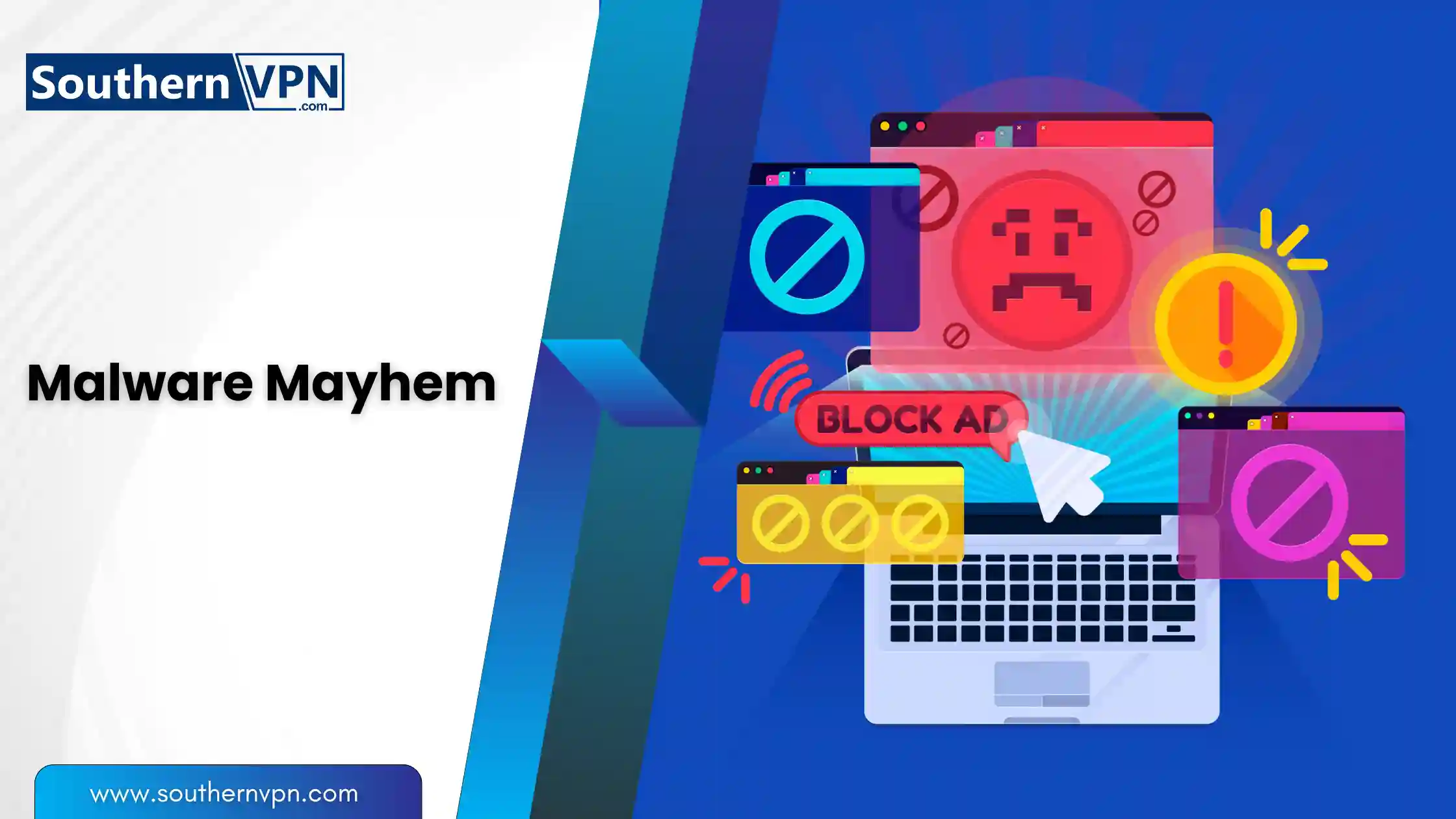
The Malware Menace
Malware stands for “malicious software,” comprises Viruses, Worms, Trojan horses, Spyware, and Adware. Such programs are considered as an intrusion on the gadgets such as computers, laptops, tablets, and smartphones.
Malware is dangerous for your cell phone, as it can steal your information, delete files, or simply black mail you asking for money so that you should stop it. There is a general term that unifies all these different types of dangerous programs and it is called ‘Malware‘.
Despite the difference in their purpose, all the types of malware share similar aims and methods, which are related to their main purpose – causing as much harm and inconvenience as possible. These are among the most common cyber threats faced today.
Viruses: The Infectious Invaders
Like many forms of life, a computer virus has grown, developed, and adapted so that it copies itself and affects files and programs in the process. It can corrupt files, freeze your computer, and in some cases, it can even relay data that is sensitive.
Worms: The Relentless Replicators
They are a type of virus that is capable of replicating on their own and invading new computers without necessarily being helped by the computer’s user. Worms can be extremely dangerous and self-replicating once they start, quickly monopolizing and exhausting all the network’s resources, and, in extreme cases, interrupting the functions of all the computers in a network.
Trojans: The Deceptive Decoys
The Trojans are malicious programs that make the users install them by camouflaging them as normal programs. After entering a device, they could give scammers direct control over your device, enabling spying and keylogging.
Ransomware: The Digital Extortionists
Ransomware is an extremely dangerous kind of virus, which is different from other viruses, bootloaders, and similar threats because it encrypts your files and then offers you to purchase of the decryption key from the black marketers for bitcoins. This looming cyber threat is blamed for sums of billions and most definitely has the potential to shut down an entire organization.
Phishing Scams

The Art of Deception
Phishing is a form of a social-engineering attack where the attacker pretends to be a legitimate entity to gain your trust and then lures you into gifting them with sensitive details or information through a fake email website link, or a fake message.
Most of them are fake messages that are likely to originate from familiar contacts hence hard to identify as fake. Phishing is one of the most common cybersecurity threats affecting individuals and organizations.
Email Phishing: The Dangerous Folder
Email phishing is one of the most present types of such a cyber menace. Phishing is yet another scheme where cybercriminals send seemingly genuine emails from a given organization or company with the aim of getting a response from the would-be victim to open an unsafe link or attachment.
Spear Phishing: The Targeted Attack
Spear phishing is more elaborate than that common practice and hackers take time to look at their targets before sending them emails with the intention of deceiving them. This makes the scam more believable as well as difficult for the other party to know they are being dragged into a scam.
Smishing and Vishing: The Mobile and Voice Menaces
The Internet is filled with criminals whose aim is to defraud people, and with the introduction of mobile devices, they have developed new ways of perpetrating their schemes which are offered through mobile phishing.
- Smishing (SMS phishing)
- And vishing (voice phishing)
They are easy to reach through text messages and phone calls, their aim is to fool people into providing account details, credit card numbers, and passwords or download some suspicious applications.

- Lightning-fast speeds to browse without lag
- Servers in 105+ countries around the globe
- Military-grade security to stay safe online
- Try it risk-free with its money-back guarantee
- Native apps for all major devices
Distributed Denial of Service (DDoS) Attacks: The Overwhelming Onslaught
Flooding the Gates
This is a cyber threat that involves flooding a specific host or network to a point when it cannot be used anymore by the people who are supposed to. This type of attack is usually executed by botnets which are networks of prolificational devices that are managed by criminals.
The Botnet Army
Many DDoS attacks are sponsored by some botnets that are remotely controlled by some hackers. Hackers incorporate numerous computers with malicious software, making the devices engage in their battle unwittingly.
These hijacked devices are then ordered to send requests to a target until its resources become overwhelmed, in essence, the site gets brought down. DDoS attacks are significant online security threats, causing major disruptions.
The Devastating Impact
Malware attacks such as DDoS are very dangerous and if launched by hackers can lead to devastating results that range from financial losses to a company or organization’s reputation and service disruption. It is most dangerous to their top-priority targets which include banks, e-commerce businesses, and government websites.
Man-in-the-Middle (MitM) Attacks
The Sneaky Eavesdropper in the Middle
Imagine you’re having a private conversation with your best friend over the phone. You’re catching up, sharing secrets, maybe even gossiping a little. It’s just the two of you, right? A MitM attack represents one of the most dangerous kinds of cyber threats, as an attacker comes between the two interacting parties, acting as “the man in the middle”.
As such, the actual conversation may be listened to or even amended by the attacker, who can also further inject undesirable content into the two subjects’ connection.
Well, not quite! Unknown to you both, there’s actually a sneaky eavesdropper lurking on the line. This devious middleman can hear every word you and your friend say to each other.
Do You Know?
Man in the middle can also interfere with your conversation! The eavesdropper can make it seem like you or your friend said things you didn’t. They can censor, modify, or completely fabricate parts of your chat on the fly.
The Conversational Con
Let’s continue with our phone analogy to really understand how these MitM attacks operate:
Normally when you call your friend, you’re establishing a direct line of communication between just the two of you. But in an MitM scenario, the eavesdropper somehow intercepts and redirects your call through them first before reaching your friend.
So instead of a simple connection, it becomes,
you → eavesdropper → your friend
with the eavesdropper squatting invisibly in the middle. From there, they can quietly listen in on your entire conversation without raised suspicion.
But why stop at just eavesdropping? By masking themselves as you to your friend (and vice versa), this Man-in-the-Middle can even secretly modify parts of your exchange in real-time as it gets relayed through them.
For example, if you told your friend “I’m free Thursday evening”, the eavesdropper could change that to “I’m busy Thursday evening” before your friend receives it – putting words in your mouth!
Clearly, that’s not just a privacy violation but also enables all sorts of fraud, impersonation and misinformation by compromising conversation integrity. It’s a virtual means to gaslight your communications!
MitM on the Modern Web
Of course, nefarious eavesdropping doesn’t just apply to old-school phone calls these days. MitM attacks are a major risk across our internet-connected world, from online transactions and app messaging to even smart home Internet-of-Things (IoT) device communications.
Here’s a simple example of how a MitM attack could unfold over the web:
- You log in to your online bank account as usual
- Unknown to you, hackers have compromised the network you’re connecting through
- They intercept your bank login request before it reaches the actual bank’s servers
- The hackers make it seem like you’re communicating with your real bank, while redirecting you to an illegitimate fake replica
- You unwittingly hand over your login details to the fraudsters’ decoy site
- They can now log in as you, drain funds, and you’d never suspect a thing!
Or imagine controlling your home’s smart thermostat remotely through an app. A MitM attack on those communications could not only let hackers snoop on your home’s heating patterns but also secretly override temperature settings as they get relayed through the hijacked connection.
From tampering with software downloads and spam emails to manipulating live video streams and smart car communications – anything transmitting data over networks provides openings for these “man-in-the-middle” attacks if proper encryption safeguards aren’t in place.
So in short, MitM threats show how even our most private digital conversations and transactions can get virtually “eavesdropped” upon by skilled cyber adversaries who intercept and tamper with that data flow for nefarious purposes.
The Sneaky Signs of an Active MitM
Naturally, the most insidious aspect of MitM attacks is also their stealth. These sneaky strikes hinge on being virtually invisible and indistinguishable from normal, legitimate network interactions.
However, keeping an eye out for some subtle red flags can help raise suspicion of potential man-in-the-middle shenanigans:
- Unusually sluggish connectivity or performance issues with no clear cause
- Unexpected device or internet behavior like random restarts/freezes
- Irregular router/network traffic logs and unknown connected devices
- Web browser warnings about invalid/tampered SSL encryption certificates
By their nature, most MitM attacks attempt to stay undetected by letting people think they’re communicating directly and securely. Any overt signs of interception, surveillance, or glaringly obvious hijinks would reveal the attack isn’t truly man-in-the-middle anymore.
Foiling the Cyber Eavesdroppers
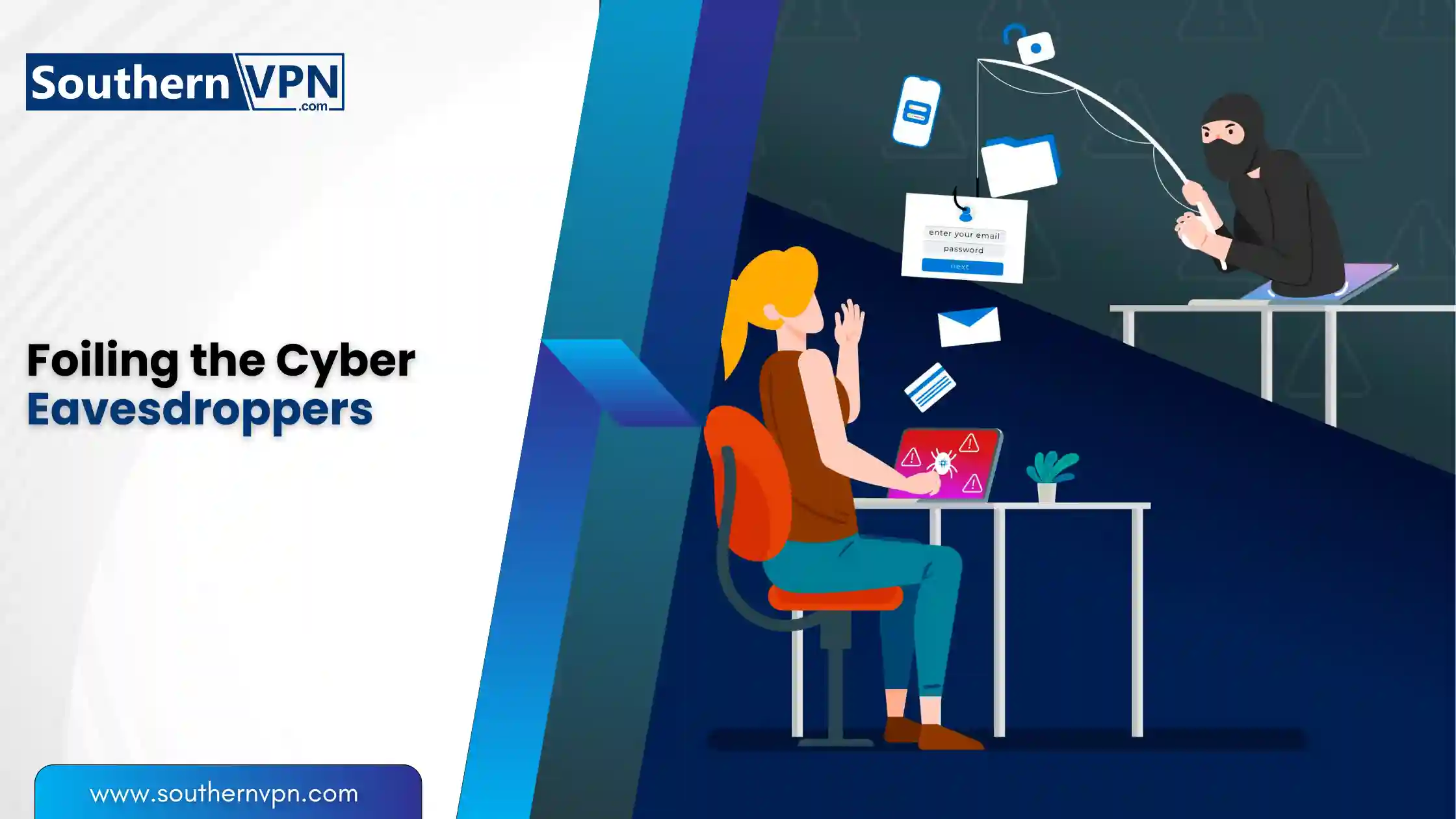
So how can you keep these sneaky cyber middlemen out of your private conversations and transactions? Implementing a few simple but powerful cybersecurity habits goes a long way:
Always Verify Encryption
Before transmitting any personal or sensitive information online, always ensure you’re communicating over an encrypted, secure protocol like HTTPS with valid certificates. Don’t ignore online security warnings about invalid certificates, as that can signal a MitM attempt.
Use Virtual Private Networks (VPNs)
VPN services create encrypted “tunnels” that safeguard your internet traffic from local network eavesdroppers and MitM hijacks as data travels between your device and VPN servers before reaching its ultimate destination.
Keep Devices and Software Updated
Developers are constantly rolling out software/firmware security patches that fix newly discovered vulnerabilities – including ones abused by MitM attackers to infiltrate devices and networks. Timely updates help seal those entry points.
Segment Your Networks
By running separate networks for sensitive personal data versus guest usage, you create built-in separation and monitoring capabilities to quickly identify MitM activity happening on a specific network.
While none of these measures are 100% foolproof against all MitM techniques, regularly employing these protective habits helps significantly minimize your exposure and vulnerability surface to having conversations hijacked.
Just remember – in both the physical and digital worlds, being aware of those sneaky potential “middleman” threats lurking is the first step in stopping them from wedging their way into your private exchanges.
So keep those cybersecurity threats antennas up and stay safe from shady eavesdroppers, whether over the phone lines or on the internet superhighways! Your personal privacy thanks you.
Public Wi-Fi Risks
Some of the vulnerable areas where MitM attacks can be implemented are the public Wi-Fi networks because users always transmit data through such orange access networks without any form of encryption. This makes ventures such as banking online or transferring any sort of personal detail over an open Wi-Fi zone very perilous. For more information on how to stay safe, read about public Wi-Fi security.
Rogue Access Points
Another popular method of launching MitM attacks is the use of fake<W>access points – those Wi-Fi networks that are established by the attackers themselves. When an attacker has gained access to the network,the attacker can easily eavesdrop on all the data transferred in the network via the rogue access point.
SQL Injection Attacks: The Database Breach
Exploiting the Code
SQL injection can be described as one of the few dangerous cyber threats that affect Internet programs that do not parse the data entered by the user correctly. It is done through embedding an SQL statement into the generally accepted unified form of data input into an application in the form of a web form or URL, this allows the attacker to manipulate the intact application’s database by; theft, modification, or destruction of its content.
The Data Breach Nightmare
This information security threat is especially damaging to organizations that use web applications to store sensitive data in a database, including customers’ data, financial details, or other internal superior information. If accomplished, an SQL injection is capable of generating serious data leaks, which are provocative to the confidentiality and integrity of a huge number of people or companies.
Password Attacks
They are of two types, namely Brute Force and Dictionary Attacks.
Password attacks are cyber threats that target giving attackers unauthorized access through login information. A brute force attack entails the use of trial and error in an organized manner whereby the system tries to input every possibility of a password until the correct one is put this technique is more effective than the dictionary attack which entails using word lists to guess the passwords more efficiently.
Social Engineering and Credential Stuffing
They also use social engineering to compel the user to give them their password such as in the case of phishing scams or pretexting (falsely justifying a reason for the password itself). However, credential stuffing attacks employ the list of the leaked usernames as well as passwords in a bid to get into other accounts that use the same credentials.
The following focuses on the significance of good passwords:
Passwords are very vulnerable to attacks and therefore the need to have strong and distinct passwords. It is efficient to set long and complicated passwords that contain both, upper and lower case, numeral, and some symbols in order to prevent hackers, cracking tools, or ordinary dictionary attacks.
Insider Threats
The Dangerous Insiders
Insider threats are potential dangers from within the organization as opposed to threats coming from outside the organization as seen in many cyber threats. Employees, contractors, or even ‘innocent’ insiders can be a danger to an organization’s infrastructure, data, and processes, or even provide entry points for external threats.
The many faces of Insider Threats:
Malicious Insiders
A malicious insider is someone who incorrectly uses the authority given to him or her to access systems or information for personal benefit or to harm the organization. This can range from embezzling intellectual property, vandalizing computer networks, or providing the hackers on the outside a way in.
Negligent Insiders
The other category is the negligent insiders who are those people who compromise the security system by being careless or by not having the necessary awareness. This can range from getting involved in phishing scams, using poor password protection, and/or not adhering to other security measures.
That is why access controls, and their monitoring, are such an important aspect of organizations’ work.
To prevent or decrease insider threats, organizations should include strong access controls within their infrastructure, restrict users’ access, and constantly monitor users’ activities in search of any signs of malicious behavior. Other preventions include proper security awareness and employee training, as well as the implementation of security policies in an effort to curb the menace of insiders.
Mitigating Insider Threats
To address insider threats, organizations should:
- Easy access control should be put in place to include; giving employees the least privileges possible and/or always reviewing their access.
- Supervise users’ actions and create reactions to threats in order to identify threats and respond to them.
- Promote a security culture for all employees through skillful and constant security awareness.
- Perform background checks and/or implement strict security measures for employees or third parties contracted to work on project sites.
IoT and Smart Device Vulnerabilities: This represents an Expanding Attack Surface and in today’s interconnected world, this problem is bigger than for most organizations.
Such computer networks can be defined as the Internet of Insecure Things.
This growing phase is associated with the threats posed by the Internet of Things (IoT) devices and Smart Home technologies. These devices that are made with little to no security can act as a backdoor for hackers to get into your network or personal information.
IoT-Based Attacks: Taking Advantage of Connected Devices
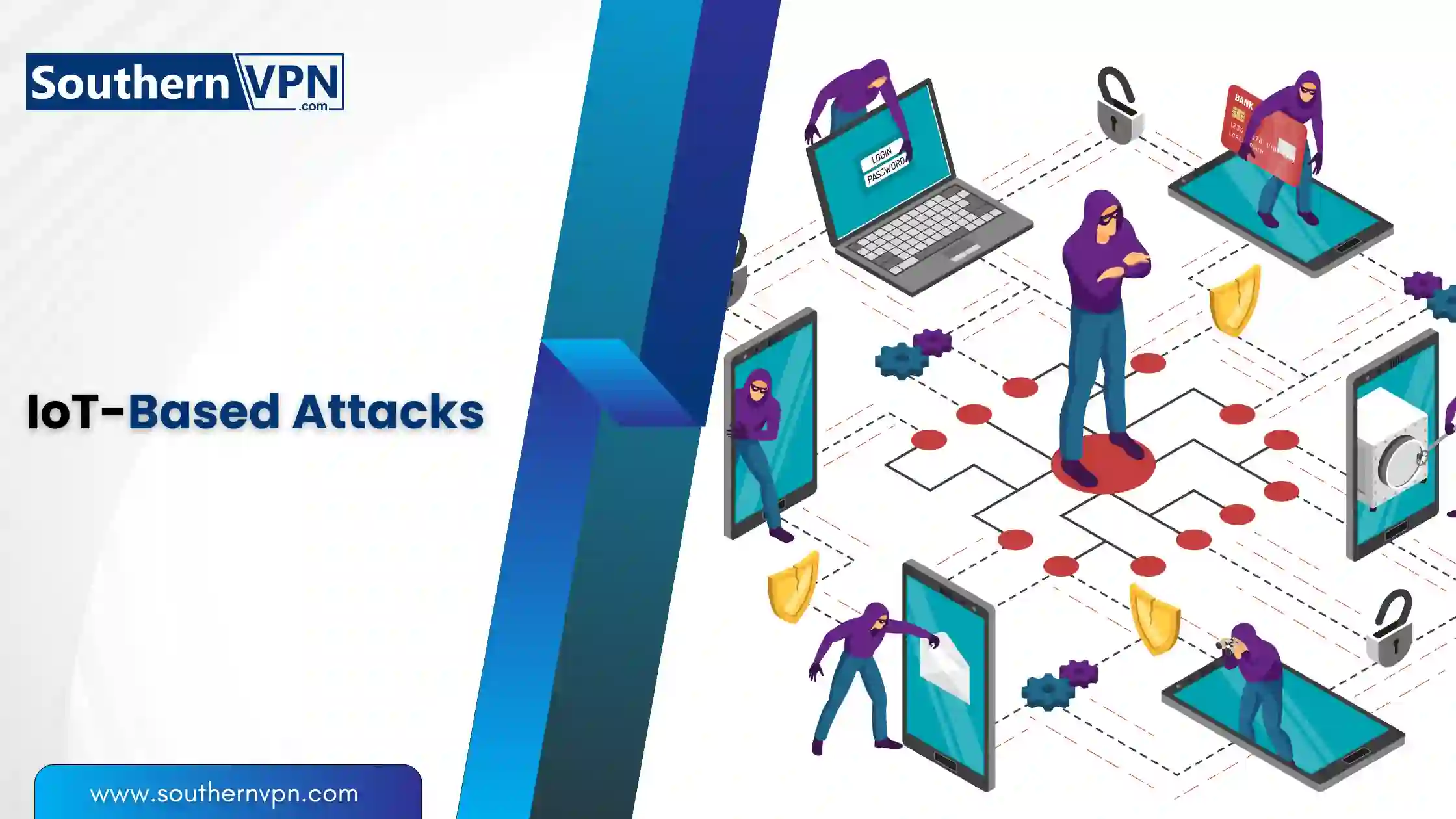
Cyber attacks that led to an Expanding Attack Surface
The increasing number and types of IoT devices ranging from smart home devices, to industrial control systems provide hackers with new opportunities. Since most IoT devices are relatively ‘new’ devices, their protection is often weak, and they are unable to protect themselves from various cyber threats.
Common IoT-Based Attacks:
Botnets: The hackers have an ability to control the compromised IoT devices and turn them into botnets for DDoS attacks and others.
Data Breaches: Even though IoT devices are often relatively simple devices if they are not adequately protected, they can give potential hackers full access to data, whether it is video streams or people’s personal details.
Remote Access Exploits: The risks that come from such kinds of security breaches include; attackers having unauthorized remote access to IoT devices.
Botnets and DDoS Attacks
Smart devices are more at risk of being included with botnets, which are networks of exploited devices utilized for launching DDoS. Connecting myriad of IoT devices with the constantly proposing threats, their most often outdated and unpatched software remain bait for hackers.
Privacy Concerns
Devices such as voice assistants, security cameras, smart TVs, etc. , are also a part of smart home systems and may also be privacy-invading tools if the hackers gain access to the devices. Hackers could breach these devices; the criminals could spy on the conversations taking place or monitor the activities or even assume control of the devices’ functions.
Securing the Connected World
There is no silver bullet in dealing with IoT and smart device threats and risks. Manufactures of these devices have to put into consideration, security within the design control and development process of these devices, and the users, have to ensure that their devices are updated regularly and the necessary strong passwords utilized, and subsequently ensure that their devices are configured and used in a secure manner.
The Analysis of IoT Security
To mitigate IoT-based attacks, it’s essential to:
- Secure IoT devices and related networks authentication, and encryption.
- Ensure that various IoT devices and firmware have the most up-to-date security updates.
- Differentiate IoT devices and networks from infrastructures and systems that are sensitive.
- IoT manufacturers and developers need to use a development paradigm called security by design.
Cloud Security Risks: The Virtual Vulnerability

The Cloud is the promise of the Allure.
Cloud computing has become an innovation that has brought change across business organizations and firms since it allows scalability, affordability, and remote access to operations. However, this convenience has its own share of cyber threats that are existing and which are known to organizations.
Misconfiguration Mishaps
Another example of accidental exposure of cloud services relates to the most widespread threat to cloud security – misconfiguration. With the lack of proper settings for cloud services, the attacker can easily access the user’s data or assets. This can result to the leakage of sensitive data, programme infiltration, and even total control of the system.
Misconfiguration is regarded as one of the most typical threats to cloud security. Malicious actors can enter organizations’ cloud environments fairly easily if the cloud services are not set up correctly, with the potential to leak data or compromise resources. This can result in theft of information, break-ins, or even total system compromise.
Insecure APIs and Interfaces
It is common to note that the cloud services interact through the APIs and the Web-based interfaces. If these interfaces are not secured well, then hackers will be able to use these interfaces to gain access or inject code that the authorized personnel did not want in the system.
Shared Responsibility Model
Identity and responsibilities for security in cloud computing environment are jointly given to both cloud service providers and their consumers. While the responsibility to provision the infrastructure remains with the provider, the customer is expected to correctly configure and secure their cloud Tenants, apply access controls and follow standard protocols pertaining to data encryptions and secure communication.
Spoofing: The Art of Imitation
Doing an Impersonation of Real Deal
Spoofing is another form of cyber threat in which the attacker pretends to be other entities including websites, email addresses, or IPs. This way, they appear credible to the users, making them divulge their private details, or else the cybercriminals gain unlawful access to the systems.
Types of Spoofing Attacks:
IP Spoofing
Spoofing, that is attempting to alter the source IP address in order to overcome security restrictions or to mask the actual source of an attack.
DNS Spoofing
Supervising the DNS resolution process to provide a fake website instead of the genuine one wanted by the user.
Email Spoofing
Such as, launching an email with a forged sender’s address that is used in the phishing attack.
Website Spoofing
Cases such as operating fake copied websites of the authentic websites in order to gain users ids or passwords or even personal information.
Remain Alert to Spoofing
To protect against spoofing attacks, it’s essential to:
- Scrutinize the websites, emails, documents, letters, and other related messages using verified sources of communication.
- Update the different software and systems used in an organization as a way of combating vulnerabilities that support spoofing.
- As for increased security ensure strong authentication mechanisms that include utilization of multiple factors to gain access to computer systems and networks.
Identity-Based Attacks: Cyber Identity Theft
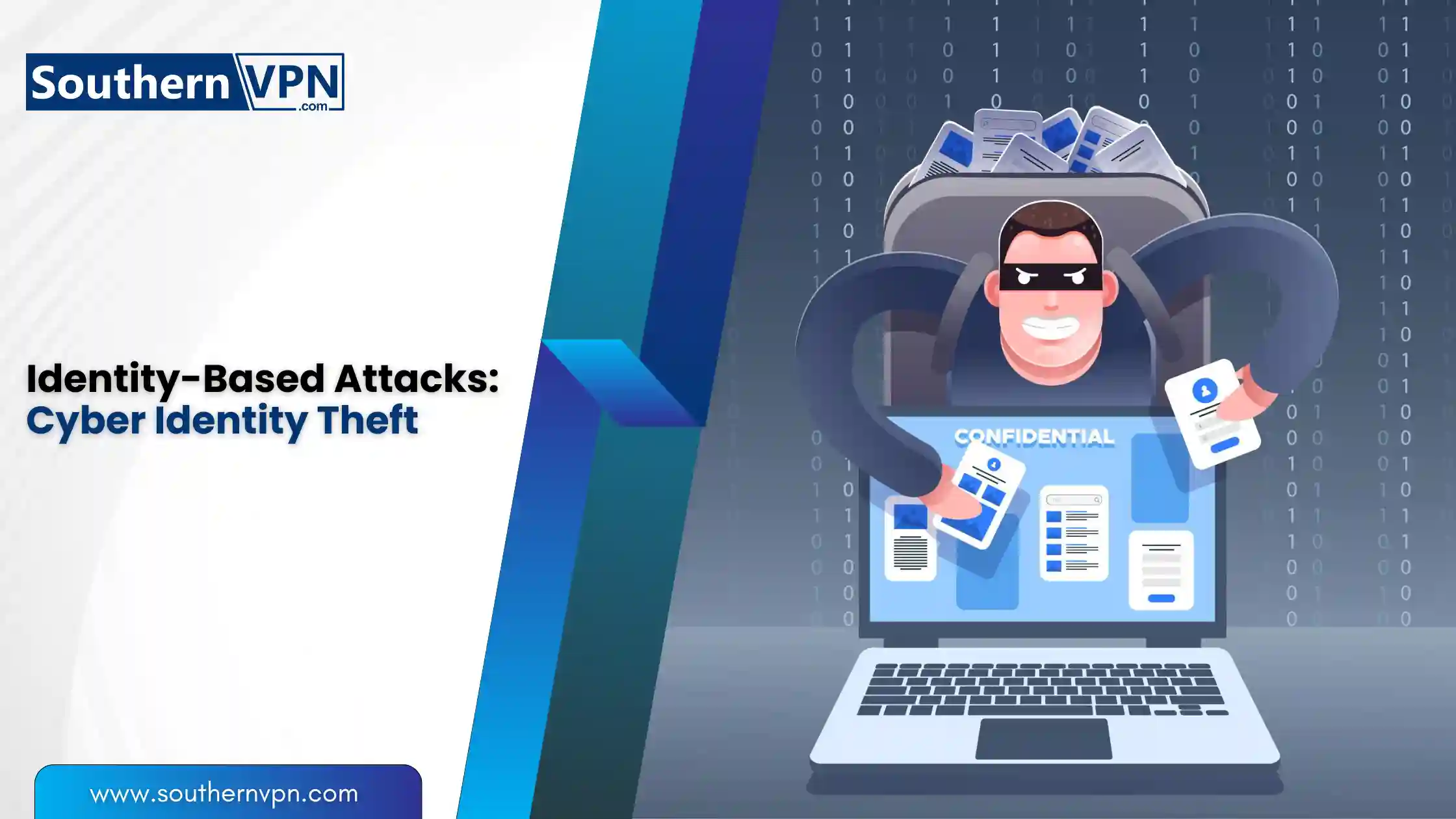
The Theft of Your Online Identity
Identify-based threats focus on an individual or organizational identity that the attacker seeks to exploit for some form of misuse. Cyber threats therefore can result to loss of funds, tarnishing of image, and invasion of privacy.
Common Identity-Based Attacks:
- Credential Stuffing: Logging in to people’s accounts by using their login details which they got by hacking into their details.
- Identity Theft: Identity theft to clone people for other evil deeds in society.
- Account Takeover: unauthorized access to the operation system and accounts by using gain access by taking advantage of reasonable loopholes or by impersonation and compromise of passwords and user identifications.
Personal Safety on the Internet
To protect against identity-based attacks, it’s crucial to:
- It is recommended to create and maintain equally complex and completely different passwords for each account to protect your data, and whenever possible, leverage other factors of authentication.
- In dealing with so, it is important that one should be careful in posting or revealing his/her identity and that of his/her circle of friends on the World Wide Web and look out for symptoms of identity theft.
- Fix software and systems to resolve the instances that allow account takeovers.
Code Injection Attacks: Taking Advantage of the Weaknesses
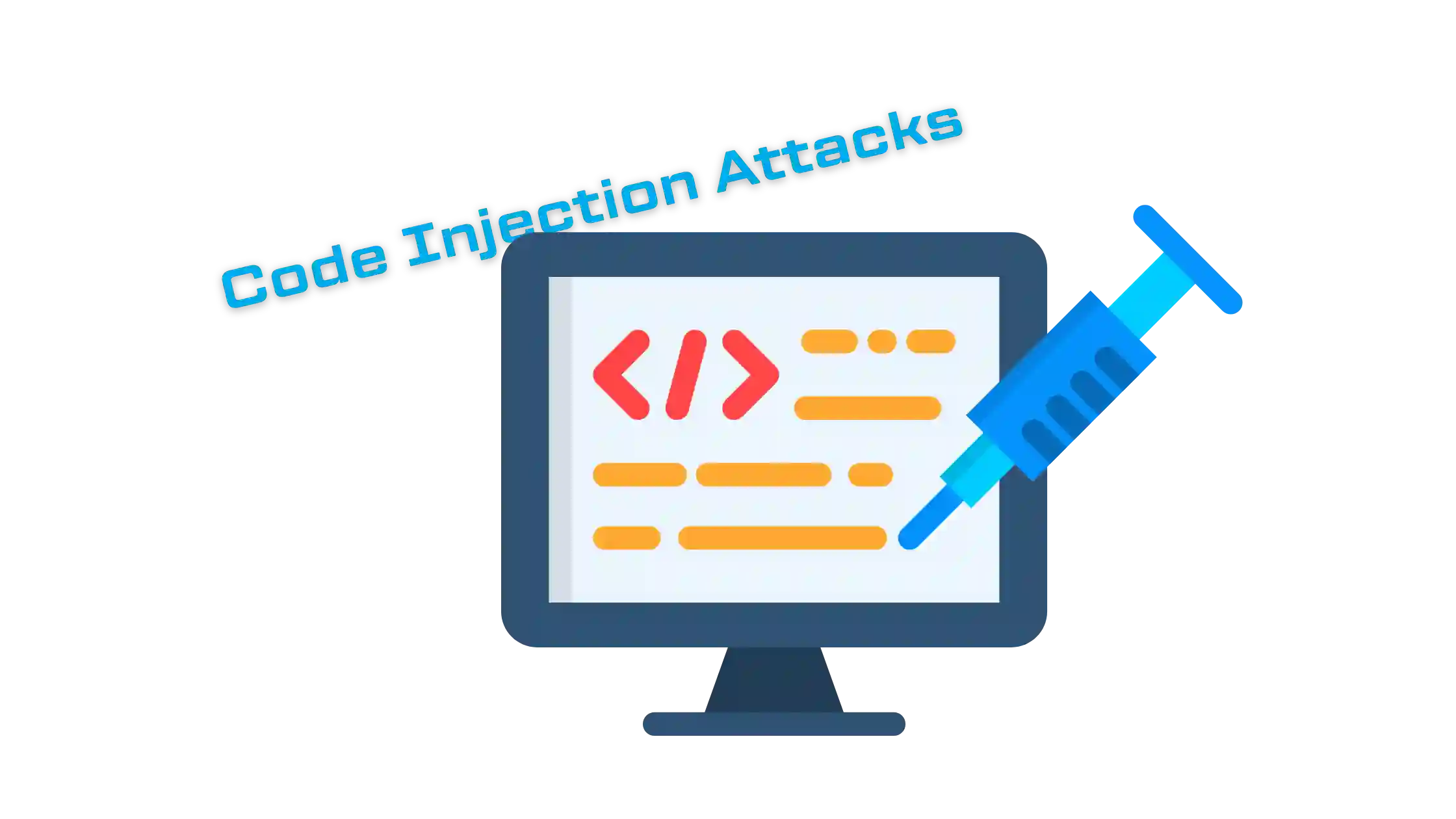
How Malicious Code is Introduced to Applications
Thanks to code injection attacks, an attacker can execute undesired, unauthorized commands while corrupting the data in the applications or gaining control over the system in which the attack was executed.
Common Code Injection Attacks:
- SQL Injection: Produce client-side injection by taking advantage of an application’s weaknesses to feed it predetermined input containing dangerous SQL commands.
- Cross-Site Scripting (XSS): Incorporating malicious scripts in web applications may likely hijack users’ Session ID or siphon off sensitive information.
- Remote Code Execution (RCE): Taking advantage of weaknesses to run a chosen code on a remote host.
Protecting applications against Injection Flaws
To mitigate the risk of code injection attacks, it’s essential to:
- It is advisable to follow best practices of input validation and sanitization to avoid code execution on the web application.
- Make sure that the software and frameworks you are using are the latest and include all the security patch updates.
- They should also have security testing and/or code review at least once per year, if not more often.
Supply Chain Attacks: Tipping The Source

Uninterrupted, high-speed browsing, zero logs so your online activity is always private.
Over 7000 people checked out NordVPN in the last month
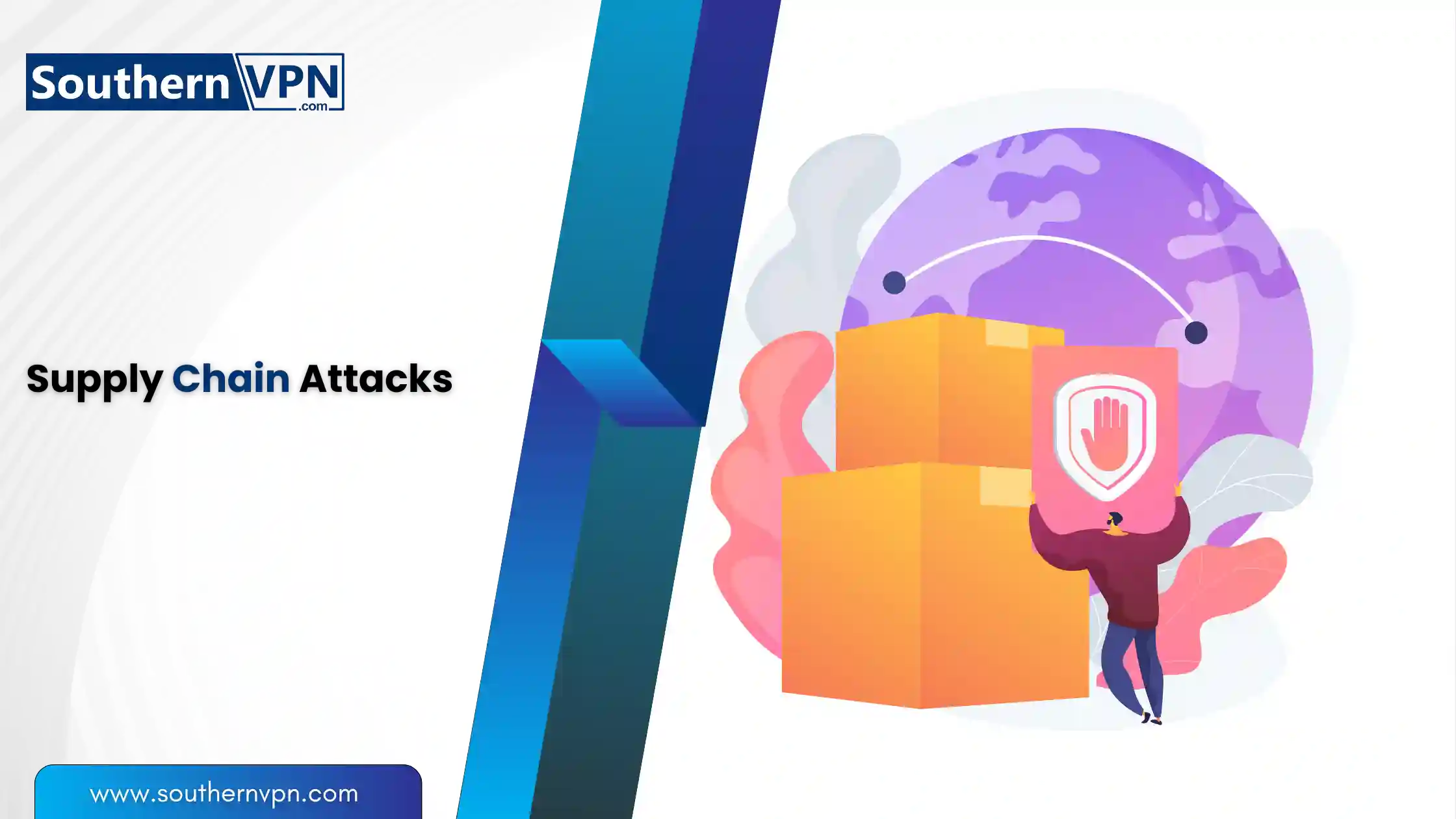
Tackling the Problem at the Source: Infiltrating the Software Supply Chain
Supply chain attacks aim at the procedures of creating and distributing the software and inserting a virus or altering components in the process. Such attacks can affect numerous systems as well as organizations that might be situated globally.
Common Supply Chain Attack Vectors:
- Compromised Software Updates: The fourth type of attack is a malware update or patch, which is a transmission of hazardous software through a genuine update or patch.
- Third-Party Dependencies: Taking advantage of bugs in third-party libraries or articles that are incorporated when developing software.
- Compromised Build Environments: Stegnanism – the act of installing virus or malware during the build-up of the software.
Securing the Software Supply Chain
To mitigate supply chain attacks, it’s crucial to:
- Use secure code and development, perform security code reviews, test for vulnerabilities, and store code in secure locations.
- Precautiously review, and assess third-party dependencies and components before the implementation of the software.
- Ensure that the built environment is safe and restricted in a certain way to prevent any unauthorized changes to the software being built.
Social Engineering Attacks: Taking Advantage of Men’s Weaknesses
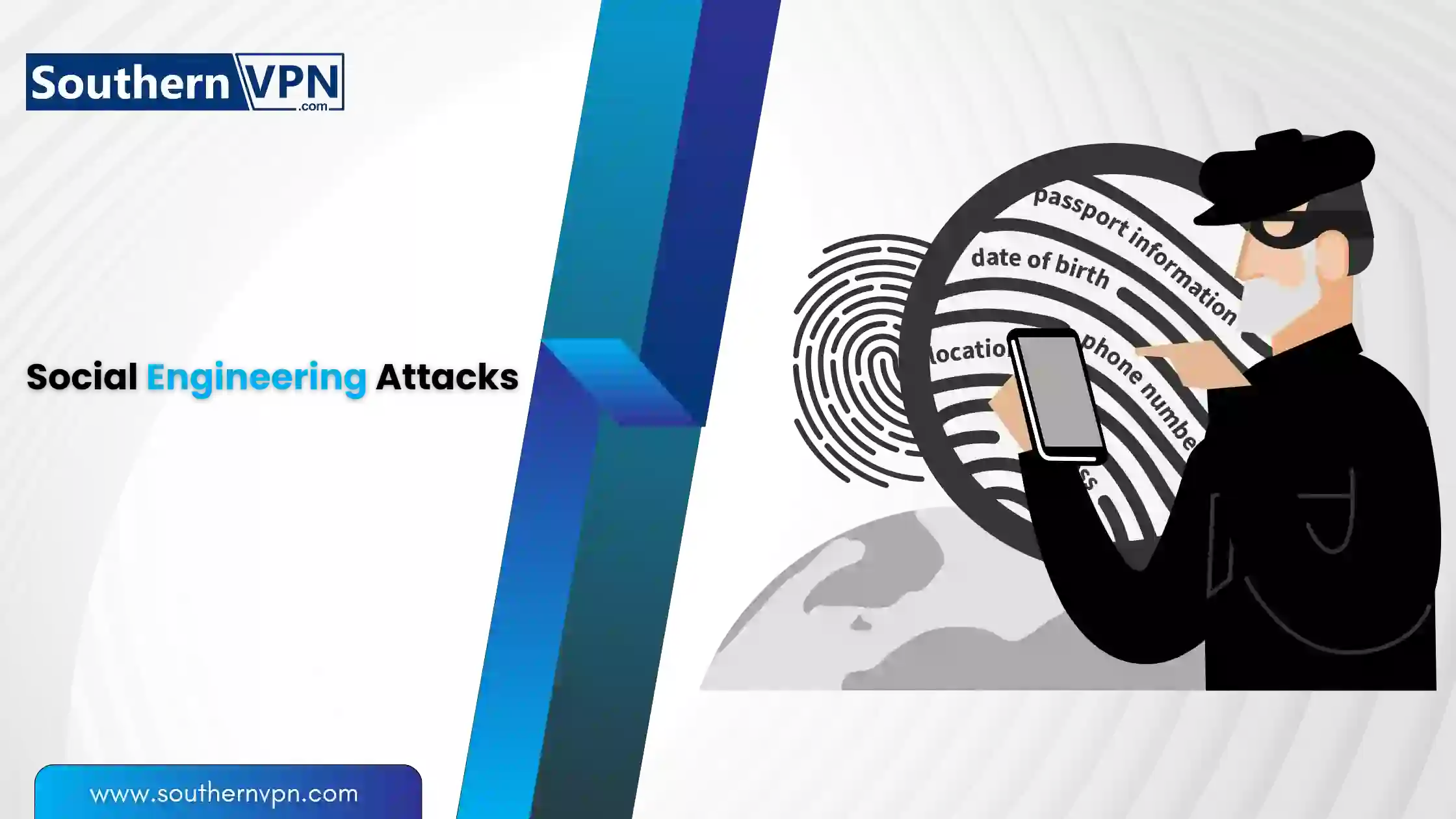
Managing the Human Factor
Social engineering is not a technical exploit; it is all about deception, deception in the form of influencing people into either providing specific information, or access or performing specific actions that are inimical to the interest of the organization.
Common Social Engineering Tactics:
Phishing
Employing fake emails, SMS, messages, and so on with the intention to deceive innocent persons and topple their important account details and passwords.
Pretexting
A type of deception to get the target to let his or her guard down in order to extract the information that is desired.
Baiting
Sometimes, the attackers leave the physical media including the USB drives containing the malware or the exploits in a conspicuous area with the intention of the victims finding them.
Culture toward Security: Cultivating It
To combat social engineering attacks, it’s essential to:To combat social engineering attacks, it’s essential to:
- Usually, educate the employees and users through security awareness training where they can discuss social engineering strategies.
- The security policies should be well-developed and should include guidelines for reporting any incident, as well as guidelines for responding to an incident.
- To others, carry a message that people should be wary especially when dealing with invitations or any form of communication.
DNS Tunneling: Sarbanes Oxidation Act 404 of 2002
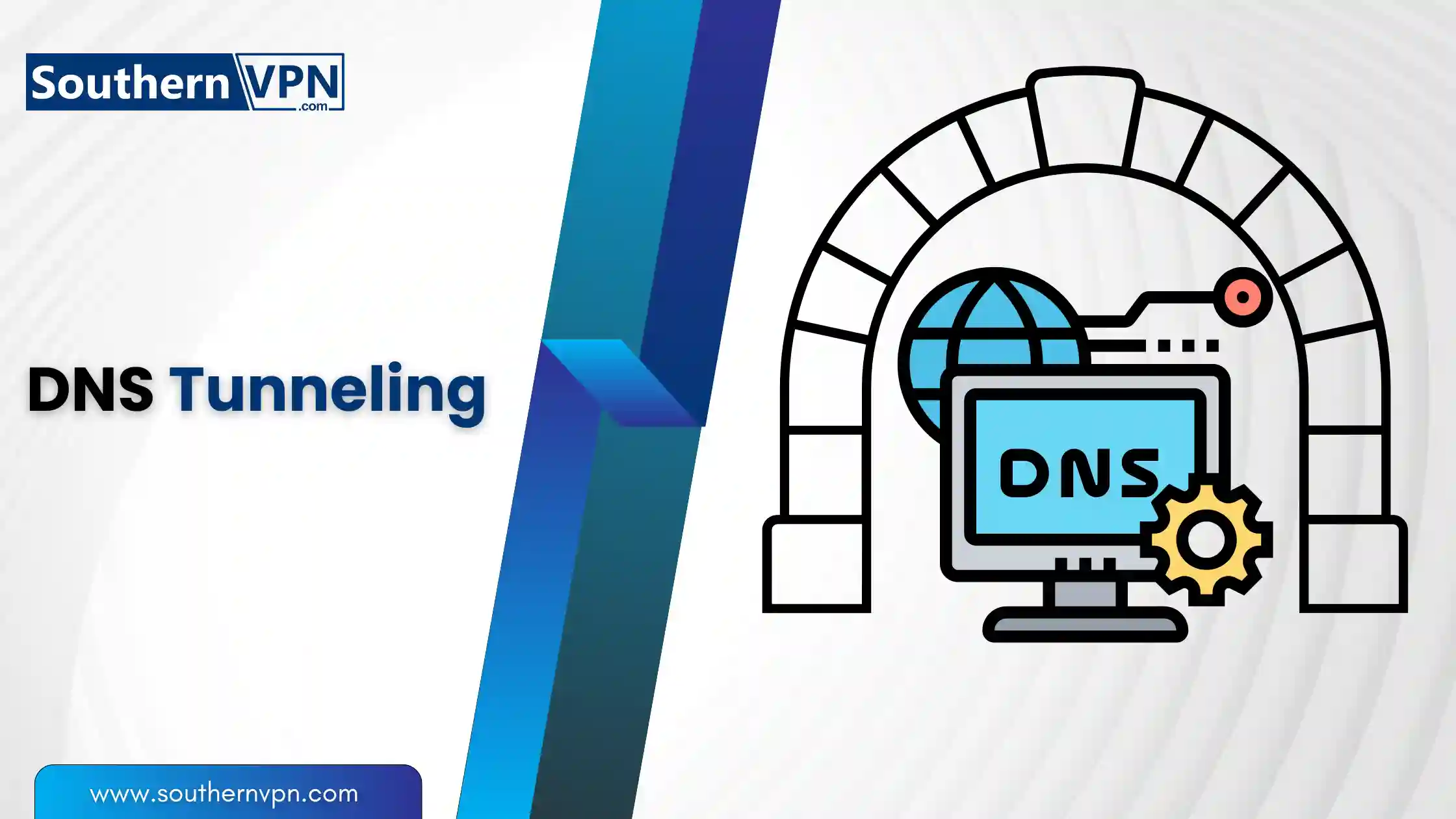
Organized Cybercrime: Acting in the Legal Grey Area, Exploiting the Domain Name System
DNS tunneling is a method employed by attackers to compromise the IT and networks’ security since it enables the attacker to transmit their traffic via DNS.
How DNS Tunneling Works:
- A fake DNS server is established to respond and dec. controls messages in the domain name system queries.
- Malware or a compromised system sends encoded data in the form of DNS queries the the rogue server.
- This means the data is decoded by the rogue server and sent to the attacker as it bypasses the security controls put strictly in place.
Prevention of DNS Tunneling
As discussed earlier, any type of traffic can be tunneled through the DNS, and as a result, the main challenge here becomes the identification of such tunnels and the subsequent ways of preventing it.
To mitigate the risks of DNS tunneling, organizations should:To mitigate the risks of DNS tunneling, organizations should:
- To prevent and monitor DNS traffic that is suspicious, use DNS monitoring and filtering solutions.
- Monitor DNS logs and activity on a frequent basis for suspicious activities or suspicious usage.
- Restrict DNS servers and related infrastructure access and implement strong security measures for the systems.
AI-Powered Attacks: The Evolving Cyber Threat Landscape

Leveraging Artificial Intelligence for Malicious Purposes
When methods like artificial intelligence and machine learning are on development, hackers also look for ways that they could use these technologies for their wrong purposes and it has thus formed a new age of AI-caused cyber threats.
Potential AI-Powered Attacks:
Automated Reconnaissance and Exploitation:
AI algorithms are another way of finding and using the gaps in an opponent’s plan more effectively than conventional approaches.
Evasive Malware:
Self-improving malware can be another type of advanced threat which are capable of overcoming the traditional security systems.
Deepfakes and Social Engineering:
Its application allows one to release deep fake videos or messages for the attackers’ social engineering purposes.
Adversarial Machine Learning:
Crooks can inject machine learning algorithms with specific data inputs they want to get as results or evade to security measures.
Defending Against AI-Powered Threats
To counter AI-powered cyber threats, organizations should:
- Implement AI solutions to address threats, actions, and assessments in security procedures.
- Ensure data security of the learning models and the training data set to prevent compromise or contamination.
- Encourage the interconnectivity of cybersecurity professionals, AI specialists, and scholars to counter new threats.
- There is a constant need to ensure that the security measures that are put into practice to deal with the increased new-generation AI threats are in place periodically.
Comparison Table: Common Cyber Threats
| Threat | Description | Mitigation Strategies |
|---|---|---|
| Malware | Malicious software designed to disrupt, damage, or gain unauthorized access to systems. | Antivirus/anti-malware software, regular software updates, user awareness training |
| Phishing | Fraudulent attempts to steal sensitive information or distribute malware through deception. | User awareness training, email filtering, multi-factor authentication |
| DDoS Attacks | Overwhelming systems or networks with traffic to make them unavailable | DDoS mitigation services, traffic monitoring, and network segmentation |
| Man-in-the-Middle (MitM) | Intercepting and potentially altering communications between two parties. | Encryption, secure communication protocols (HTTPS, VPNs), certificate validation |
| SQL Injection | Exploiting vulnerabilities in web applications by injecting malicious SQL code. | Input validation, software updates, secure coding practices |
| Password Attacks | Attempting to guess or crack login credentials through various techniques. | Strong, unique passwords, multi-factor authentication, password management tools |
| Insider Threats | Intentional or unintentional security breaches by individuals within an organization. | Access controls, user activity monitoring, security awareness training, incident response plans |
| IoT Vulnerabilities | Exploiting security flaws in Internet of Things (IoT) devices and networks | Device security updates, network segmentation, secure configurations, access controls |
| Cloud Security Risks | Misconfigurations, insecure APIs, and shared responsibility in cloud environments. | Secure configurations, access controls, encryption, regular audits, and provider collaboration |
| AI-Powered Attacks | Leveraging artificial intelligence for automated attacks and evasion techniques. | AI-powered security solutions, robust data governance, collaboration between experts, and continuous adaptation |
Cyber Threat Prevention And Mitigation Strategies
Proactive Defense: The Best Offense
Programs intended to penetrate computer systems can change swiftly, and they are most dangerous when the owner of the system is not prepared. Therefore, through well-enhanced security systems and alertness, organizations and people can minimize their prospects of falling prey to cybercriminals.
Cybersecurity Threats Awareness and Training
Another preventive measure involves providing relevant information on cybersecurity threats to the employees and the users of the firm’s systems and products. Periodic ordinary security awareness training shall assist people to identify and avoid various threats that may arise in a computer system inclusive of phishing, social engineering and other irresponsible behavior on the internet.
Software and Systems Maintenance and updates
Candidates should also apply application updates and patches timely to meet the existing threats that hackers can leverage. Running old software and operating systems create opportunities for the penetration of the cyber threats into your system.
Implementing Robust Access Controls
The second type is the control of access; Fort, for example multi-factor authentication enhances the security of a system by going an extra step beyond passwords. Another factor that can be used to address insider threat is by reducing the authority of special user accounts and auditing the user roles frequently.
Data Encryption and Secure Communication
Data security involves the use of encryption where the data is in storage and where it is being transmitted from one point to another. Moreover, communicating with HTTPS and VPNs can defend against man-in-the-middle attacks and protect the identity and confidentiality of online activities.
Backup Schedules and Handling of Incidents
The primary method organizations can use if they get caught up in a cyber attack such as ransomware or a breach is to have fresh and up-to-date backups of important data and systems. Also, a clearly outlined incident response plan would help to reduce the loss of the company when the cyber attack occurs and also help in quick restoration when compared to the time needed with poor preparations.
Frequently Asked Questions (FAQs)
What are the most typical types of threats?
Some of the most common cyberattacks include:
- Phishing attacks: It is a site where hackers are likely to send fake emails, text messages, or fake websites with the intention of making the targets disclose their passwords or any other financial information.
- Malware attacks: The process of targeting devices and systems with the aim of damaging the properties with viruses, worms, and malware besides stealing data or interrupting their functions.
- Distributed Denial of Service (DDoS) attacks: Drowning systems or websites with too many requests and consequent traffic from different sources within a very short time such that the systems or websites become inaccessible.
- Ransomware attacks: Where attackers install viruses that lock files or systems and the attackers request payment in exchange for the decryption keys.
- SQL injection attacks: Taking advantage of brittle points that web applications contain by inserting risky code in the user input fields, may bring privileged access to the databases.
What other cyber attacks are noticed to be frequently used?
Fraud and viruses are the most common kinds of cybercrimes victims experience, though they are not the only ones. Phishing turns into a successful method due to the fact that it exploits human mistakes, and malware is easily transmittable between devices through the Internet, emails, or removable media devices.
Ransomware attacks have also started trending, and their effectiveness is quite monumental since they help the hacker retrieve a lot of cash from either a single person or an organization.
Which cyberattacks are considered the most interesting?
There are a number of interesting cyberattacks, which either use innovative approaches or result in severe consequences. For example:
- The Stuxnet worm: A progressive cyber attack on Iran’s nuclear site to affect and penetrate systems controlling industrial processes.
- The WannaCry ransomware attack: A global ransomware attack in the year 2017 that targeted hundreds of thousands of computers across different industries healthcare and telecommunication industries included.
- The SolarWinds supply chain attack: An intense attack in which the malware infiltrated the software supply chain of a large IT company namely SolarWinds to infiltrate multiple governmental and private organizations.
- The Colonial Pipeline attack: The ransomware attack that occurred in 2021 which led to the closure of a significant pipeline that supplies fuel to the United States leading to an Urgent short supply of fuel across the United States.
What are the main differences between cyber-physical attacks and common cyberattacks?
Conventional digital assaults are aimed at computers and networks, along with other related data. While cyber attacks seek to compromise or control a particular system or facility, cyber-physical attacks intend to affect physical systems or structures because of the control they have garnered through the cyber aspect.
Examples of cyber-physical attacks include:
- Espionage and cyber sabotage of ICS in manufacturing, energy, or transportation industries that could result in physical harm or closure.
- Gaining unauthorized control over connected devices such as smart homes, self-driven cars, or even critical healthcare devices may cause an impending danger to anyone’s life.
- Also, cyber-terrorism involves vital structures such as electrical supplies, water treatments, or communications systems, which cause actual world effects.
What sort of comparison can be made between a cyber attack and COVID-19?
Viruses are known to spread very fast, and that was the case here where many systems all over the world were affected. Like COVID-19, which requires barrier gestures to be intervened, cyber attacks also require measures such as updates and controls. Appropriate measures are preferably begun at the onset of the threats, which are also equally damaging.
Nevertheless, it is crucial to state that although this parallel allows comparing the approximate effects and the ability to spread certain types of threats, the characteristics and the methods of distribution are different for cyber threats and viruses in the biological sense.
The Bottom Line
Keep in mind that it is impossible to fully protect yourself from the threats of cyberattacks once and for all. Driven by the inherent risks that increase every day as threats appear in the form of viruses, malware, frauds, or scams, mitigating risks requires frequent assessment of the organization’s approach and policies, being informed of potential dangers, and making security a priority for all members within an organization.
Stop thinking that the world is ‘acting’ upon you and that you are too ‘small’ to do anything about it In the future – ACT NOW ‘Together we are stronger’ So, united we stand and make the cyber threats bow down before the joint forces.






